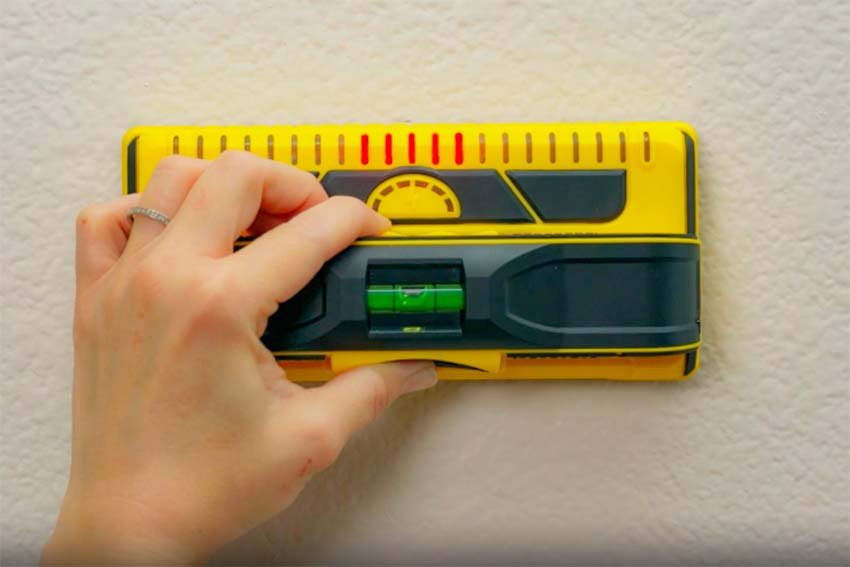
When hanging heavy objects on walls, finding the stud is important to ensure they are properly secured to your wall. Otherwise, you risk damaging your wall and the object attached to it. Understanding how to find a wall stud is an essential DIY skill for various projects, from hanging pictures to installing kitchen cabinets.
Tip: If you want a recommendation—this is our favorite stud finder on the market.
What is a Wall Stud?
Wall studs provide the framework for your home’s structure. They are vertical framing boards that go all the way from the floor to the ceiling. They provide the support that holds other building components in place, like drywall, insulation, and electrical systems. Wall studs typically use 2x4s spaced 16 or 24 inches apart.
Importance of Wall Studs in Construction
Even though wall studs are just one part of the entire framework of the house, they play several important roles. Of course, the most vital function of wall studs is to hold up the wall. They support the framework of the rest of the house, including the ceiling and roof. But that’s not all that wall studs do.
Wall studs also support other framing members to which windows and doors attach. They also support utility systems, such as electric wires, gas pipes, and water lines. After the insulation, builders attach drywall and exterior sheathing to the wall studs. They also support and stabilize fixtures like cupboards and counters.
The Role of Wall Studs in Your Home’s Structure
Many homes are built with traditional stick frame construction. In this type of construction, all parts of the home construction use various pieces of lumber. After installing the floor, builders construct the walls to support the rest of the house (including the roof).
In stick frame construction, wall studs play an important role. They support the interior and exterior sheathing panels, provide structural rigidity, and maintain straight walls. The top and bottom plates hold the wall studs in place. Horizontal studs called headers and sills support windows and doors.
The more you understand about how wall studs work, the easier it is to find them in your wall. So here are some more important facts about wall studs:
- King studs run from the top of the wall all the way to the bottom. Shorter “jack” studs hold up window sill plates and door headers.
- Manufacturers make studs from different lumber dimensions, with 2x4s and 2x6s as the most common.
- A nominal 2×4 stud actually measures around 1-1/2 x 3-1/2 inches.
- Studs are typically spaced 16 inches apart, depending on local building codes. Sometimes, you will find them 24 inches apart, but it’s very rare for them to be further apart than that.
- Electrical boxes attach to wall studs with electric lines running between them.
- Water lines and gas pipes sometimes run through wall studs.
- Both interior and exterior sheathing attach to wall studs, as well as trim, baseboards, and crown molding.
- While most residential homes use wood wall studs, some use metal studs. Most commercial buildings use metal studs.
How to Find Wall Studs
When it comes to hanging artwork, decor, and appliances like TVs in your home, you need to find a stud to secure the object properly and avoid damaging your drywall. It can be hard to identify the location of wall studs once you cover them with drywall. However, understanding how they work makes finding them much easier.
Locating Wall Studs Without a Stud Finder
Using a stud finder is hands down the easiest way to locate studs, but it’s not the only way. So how do you find a wall stud without a stud finder? Here are several methods you can use.
Looking for visual clues
Inspect the wall where you’re trying to find a stud. Look for clues like where the baseboards and crown molding are nailed. Even if these nail holes are filled with putty before being painted, you may be able to identify them. Once you find a stud anywhere on the wall, you can measure in 16-inch increments to find the one you want.
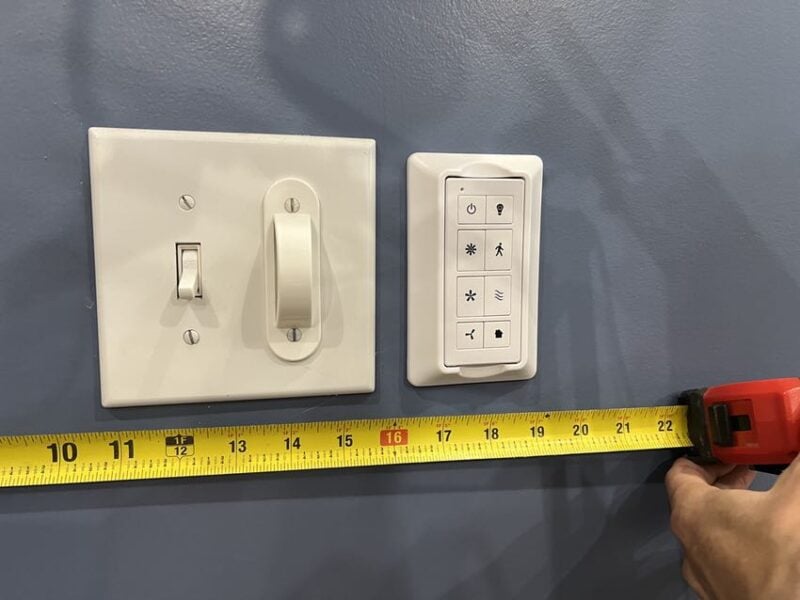
Looking for switches and outlet boxes is another way to locate a stud. You need to know which side of the stud the box was attached to. You can use the knocking technique to quickly determine that.
Using the knocking technique
You can often quickly determine the location of a stud by rapping your knuckles on the wall in various locations. Both the sound and feel give away the stud’s location. The knocks sound hollow between the studs, but the closer you get to a wall stud, the more solid it sounds. Knocking back and forth a few times will give you a good idea of where to drill into the wall. Use other techniques and visual clues to be certain.
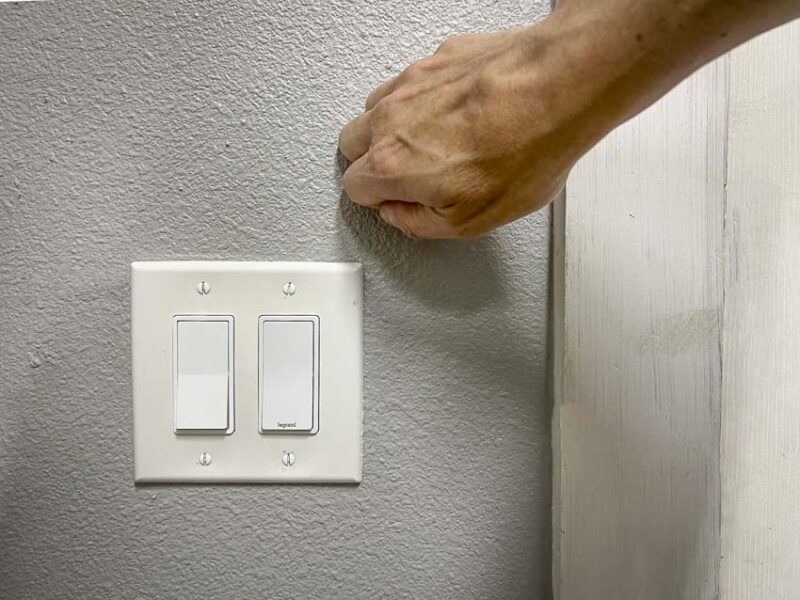
Measure from the corner
Since you know a stud is in each corner, you can measure 16 inches from there to find the next stud. However, the next stud isn’t always 16 inches from the corner stud, so this doesn’t always work, but it can be a helpful method to pair with the knocking technique and visual clues.
Use a strong magnet
This technique won’t work with weak refrigerator magnets, but if you have a strong neodymium magnet, you can use it to locate nails and screws in your drywall. If you place it on the wall where you think a stud is, it will stick wherever metal fasteners are, like screws and nails. You can also use a product like the StudPop stud finder.
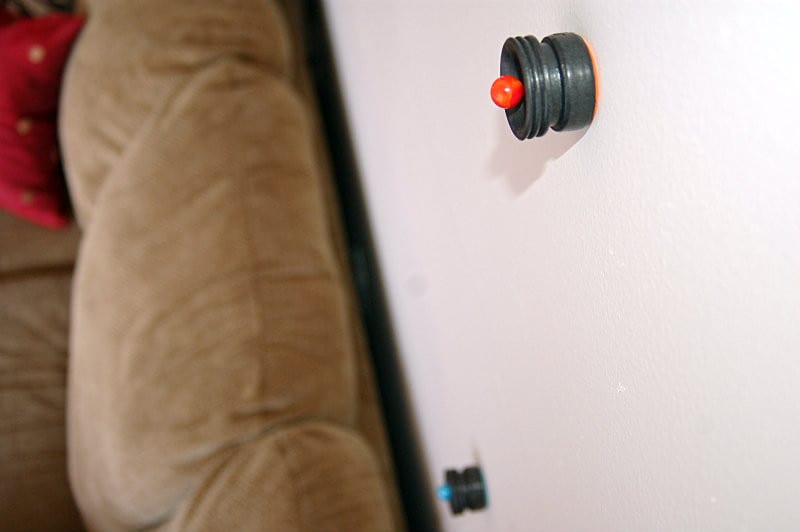
How to Use a Stud Finder to Locate Wall Studs
Using a wall stud finder is the easiest way to determine where your studs are. However, several types of wall stud finders are available, so the first step is choosing the right one.
Choosing the Right Stud Finder
There are many different styles of stud finders, but to simplify, there are generally only two types. The two main categories of stud finders are electric and magnetic, and you’ll be able to find many different models from various brands in these two categories.
- Magnetic stud finders are center-finding stud finders, and they are usually less expensive. They use magnetic sensors to sense the nails or screws that hold the drywall to the stud.
- Electronic stud finders can sense either the center of the stud or the edges, and they are more accurate. They use electric signals to locate the stud and can also detect live wires and other objects in the wall.
Electric stud finders work best on drywall, so if you’re trying to find a stud on a plaster wall, use a magnetic stud finder for the best results.
Properly Operating a Stud Finder
No matter what type of wall stud finder you choose, you have to know how to use a stud finder to use them successfully. You can buy the best stud finder on the market, but it won’t work for you if you aren’t using it properly.
When using an electric stud finder, be sure to start with charged batteries. Place the stud finder on the wall where you think the stud is, and use it to locate the center. Mark an X on the wall, then double-check your work before drilling. Once you find a stud, you can measure 16” to find the next one.
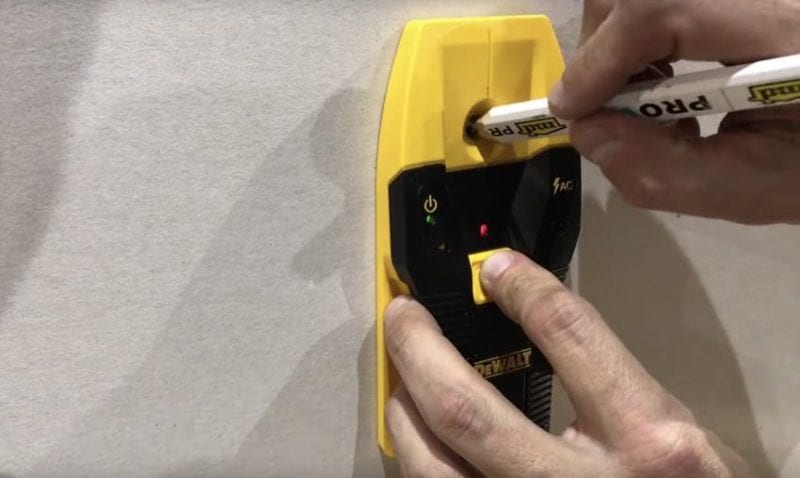
Frequently Asked Questions (FAQs) about Finding a Wall Stud
How Far Apart Are Wall Studs Typically Placed?
Wall studs are usually placed 16 inches apart on-center, meaning that the distance from one stud’s center to the next’s center is 16 inches. However, some buildings—like detached pole barns and garages—can come framed with studs spaced 24 inches apart. This holds especially true for exterior walls framed using 2×6 lumber.
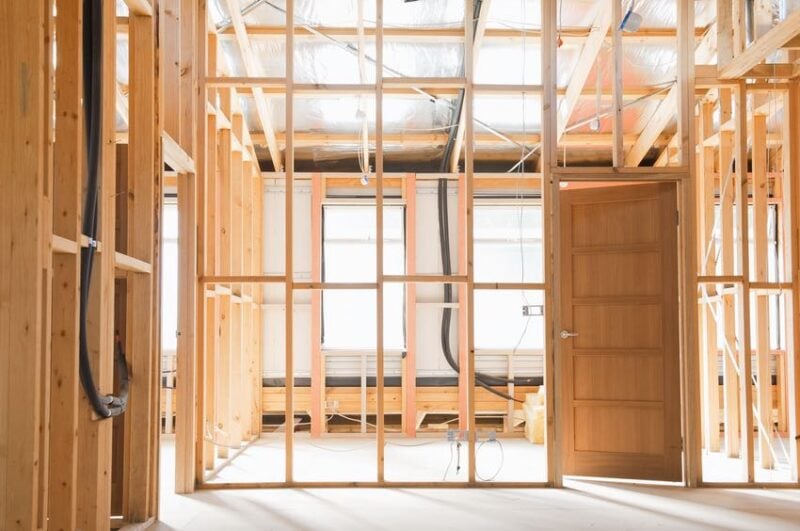
Can I Hang Heavy Items Without Finding a Stud?
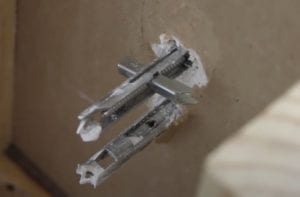
It’s not a good idea to hang heavy items in drywall without finding a stud to secure them, but if you have to, you should use a toggle bolt, which is an anchor bolt made for drywall.
There are several types of drywall anchors, but most toggle-style versions hold a maximum of 50 to 100 pounds. Avoid plastic drywall anchors for anything except lighter-weight objects like small pictures and decorative signs. This should go without saying, but never use an anchor when suspending anything substantial from the ceiling. Locate a ceiling joist.
Are There Any Risks to Drilling Without Locating a Stud?
It’s unsafe to drill into your wall without knowing where the stud is because you could hit electrical wires, gas pipes, and water pipes. Not only could hitting any of these systems cost you a lot of money, but you may encounter potential dangers, including electrocution and the risk of explosions or fires.
How Accurate are Stud Finders?
The best stud finders can be extremely accurate, but only if you know how to use one. Before looking for a stud, learn how to use a stud finder to make the rest of your job easier. Also, you can avoid common mistakes by remembering to check the batteries to ensure that your wall stud finder is working properly. Always double-check your work, and remember that you can also measure increments of 16 inches from a known stud to verify the location.
Stud finders also vary in how they locate studs. Some look for density changes while others locate the metal signatures of screws and nails used to secure the drywall to the stud.
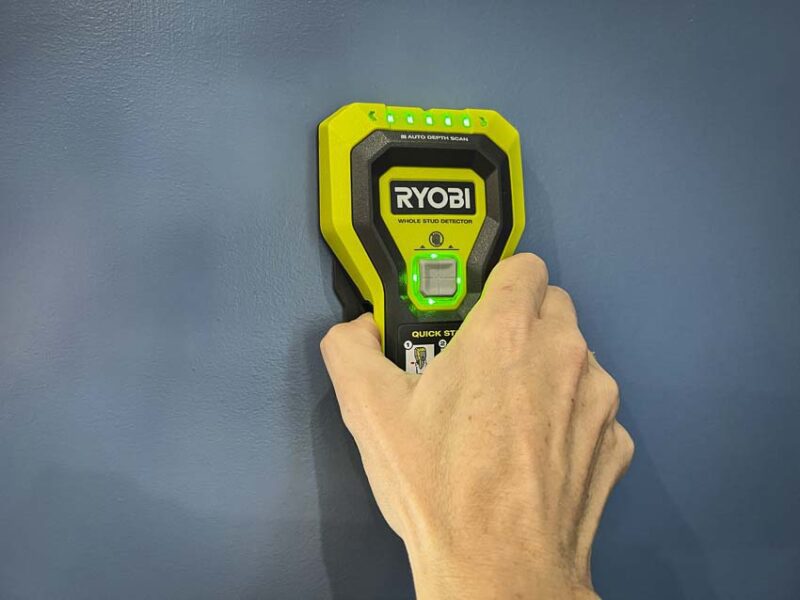
What Can I Do if I Still Can’t Locate a Stud?
Use a straight piece of flexible wire if you can’t locate a stud with a stud finder or other traditional methods. Insert the wire into a small hole in the wall and try to find the stud by fishing for it with the wire. You’ll know you found a stud when you make contact with a firm object.






